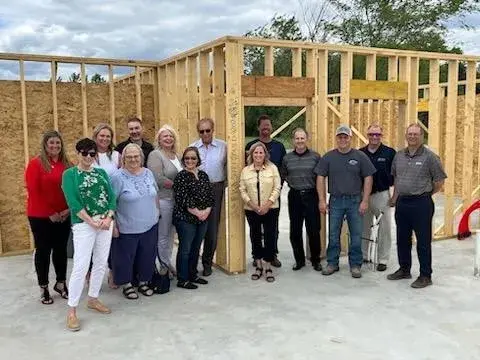In the heart of North Dakota’s Red River region, a persistent housing shortage is making it harder for families to find affordable homes and for local businesses to grow and add new jobs.
Red River Community Housing Development Organization (RRCHDO) is stepping up to meet this challenge with its workforce housing initiative called SparkBuild, an ambitious program designed to increase affordable housing options for low-income households in Grand Forks, Nelson, Pembina, and Walsh counties.
Affordable Supply Failing to Keep Pace
Employers throughout this area – designated as the state’s Region 4 – are planning to add up to 1,500 new jobs over the next five years. However, there are not enough affordable homes to keep pace. This shortage stems from a long history of underinvestment in the region, a lack of contractors in rural areas, and appraisal gaps, which make new homes financially out of reach for many lower-income households.
Over the last 10 years, three rural counties—Nelson, Pembina, and Walsh—have averaged only two new building permits per year, and these new homes were not affordable for lower-income families.
During the past five years, only two USDA Rural Development 502 direct loans were made.
In RRCHDO’s most recent housing study, North Dakota’s housing challenges are characterized by an aging and limited housing stock and sluggish rate of new construction that is especially apparent in rural areas of region 4. To accommodate a growing population and need for more workforce housing, rural areas will need to add nearly 4,800 new housing units by 2030 to keep up with demand.
Advancing Innovation to Close the Gap
To tackle the region’s housing challenges, RRCHDO put a $43,000 Section 4 grant to strategic use—bringing on dedicated staff solely focused on advancing their workforce housing initiative. With support from the latest round of Section 4 funding, the team is now exploring modular and manufactured housing options to help meet local demand.

For their workforce housing work, RRCHDO collaborated with local cities to secure buildable lots and negotiate two-year property tax abatements for low-income homebuyers. Thanks to the Section 4 funding, staff were able to identify affordable and practical house plans while ensuring construction cost estimates were accurate and reliable.
The initiative also helped to establish partnerships with lenders to secure construction loans and prepare grant applications for additional funding opportunities, including the HOME Investment Partnership Program CHDO set-aside funding. They worked with regional employers to promote the program and align housing development with workforce needs, while conducting outreach to income-eligible households to connect them with homebuyer education and down payment assistance resources.
They were able to build four single-family affordable homes that were sold by the end of 2024, with two now under construction and four more on the ground undergoing concrete.
“If we can just keep building a small number of homes every year – we’re basically building comps – we’re hoping that this kind of spark jump starts additional new home construction,” RRCHDO Executive Director Lisa Rotvold said.
By investing in staff expertise and program infrastructure, RRCHDO is laying the groundwork to address housing needs well into the future. Their comprehensive approach promises to revitalize rural communities, support local economies, and provide safe, affordable homes for families that need them most.
